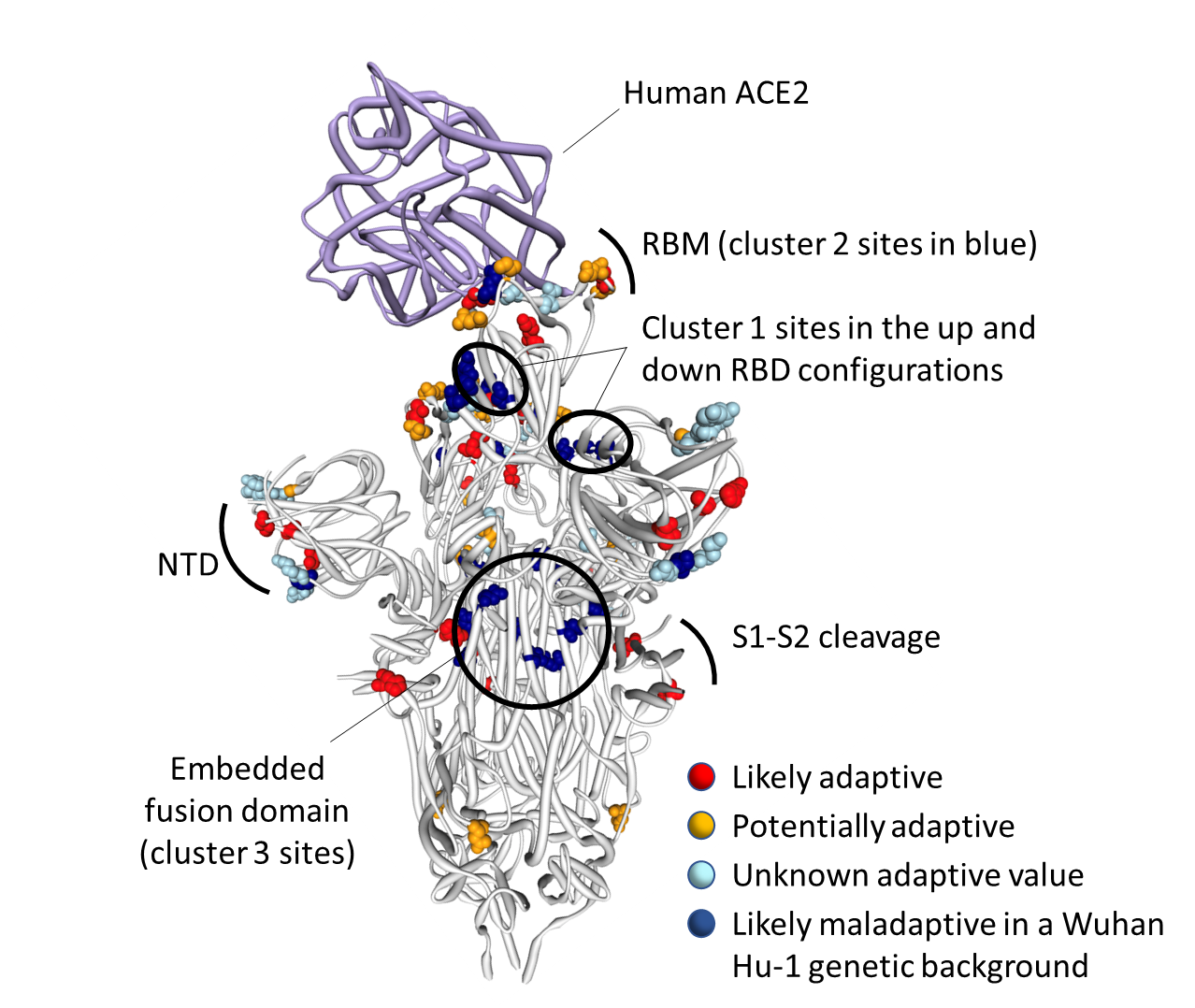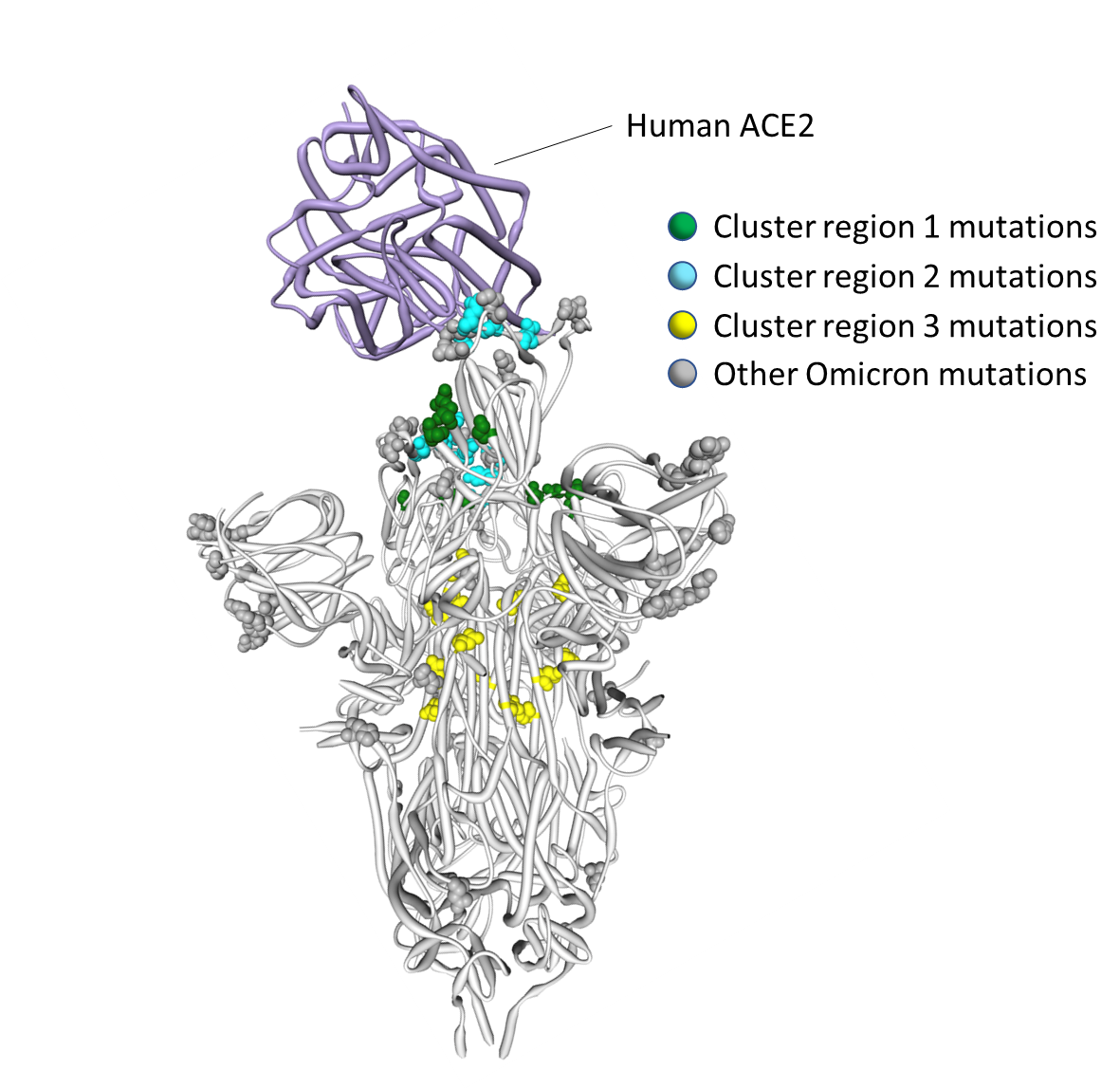BREAKING! New International Study Reveals That Omicron Variant Has Increased Transmission, Immune Evasion And Viral Replication Properties
Source: Medical-News - Omicron Variant Dec 06, 2021 4 years, 1 month, 1 day, 10 hours, 19 minutes ago
A new detailed international study of the genome of the Omicron variant and its mutations and location of mutation clusters has revealed that the Omicron’s Spike protein structure has accommodated significant sequence changes, likely in response to selective pressures favoring increased transmission, immune evasion, or viral replication-either at the population level or in a single or group of chronically infected individuals and has potentially acquired new functionality.
 Please help to sustain this site and also all our research and community initiatives by making a donation. Your help means a lot and helps saves lives directly and indirectly and we desperately also need financial help now.
Please help to sustain this site and also all our research and community initiatives by making a donation. Your help means a lot and helps saves lives directly and indirectly and we desperately also need financial help now.
https://www.thailandmedical.news/p/sponsorship
The study findings were published on the Virological.org site.
https://virological.org/t/selection-analysis-identifies-significant-mutational-changes-in-omicron-that-are-likely-to-influence-both-antibody-neutralization-and-spike-function-part-1-of-2/771
https://virological.org/t/selection-analysis-identifies-significant-mutational-changes-in-omicron-that-are-likely-to-influence-both-antibody-neutralization-and-spike-function-part-2-of-2/772
Contrary to premature statements by stupid ignorant ‘experts’, moronic health authorities, lying politicians who have ulterior agendas and the garbage Western mainstream media that are basically rimming those controlling the COVID-19 narrative, the new Omicron is basically a new threat that can change the course of the COVID-19 pandemic and unravel whatever little achievements we have had in trying in to control the degree of damage caused by the SARS-CoV-2 virus so far.
The fact that many are saying that the Omicron variant causes only mild symptoms is a very premature statement and considering that hospitalization data is not very well collated by the public healthcare authorities in South Africa who are famed for their incompetency, it is very dangerous to issue such statements to the masses in other countries especially in the western societies that are full of low level life forms that love to spew stupid unfounded theories etc. As of late, the social media platforms are echoing garbage spewed out by the incompetent garbage at the WHO (World Health Organization) who are responsible for the current predicament that the world is currently going through in the first place, saying that there are nothing to worry about with regards to the Omicron variant as it only causes mild symptoms!
Stupid health experts in South Africa are stating that current increase in hospitalizations are not due to COVID-19 disease severity and there is very cases needing supplemental oxygen or ICU and that most cases are purely incidental ie patients got admitted due to other reasons but upon testing, tested positive for COVID-19 and genomic sequencings revealed that they were infecte
d with the Omicron variant.
 Guateng Hospitalization Data
Guateng Hospitalization Data
A preliminary research by Thailand
Medical News into hospitalization data revealed that most admitted were young but they were admitted in for severe gastrointestinal issues, chest pains and heart palpitations, heart attacks and a variety of neurological issues…….sounds familiar? Can we not assume that is the Omicron causing these conditions? Should not detailed analysis of hospitalization data be made instead of mere speculations…is there some reason or hidden agendas as to why we are being told that Omicron only causes mild symptoms and also there are no deaths so far? About 67 deaths were attributed to sepsis and organ failure arising from gastrointestinal issues in the past seven days! Should not someone be investigating this????? (Source of information were via physicians working at some of the hospitals in Gauteng who are just as baffled!)
Coming back to the study, the findings show that the bulk of the mutations found on the Omicron variant have been divided adaptively into three clusters regions:
 Positions on the three dimensional SARS-CoV-2 Spike trimer of amino acids encoded by three clusters of Omicron codon sites that are evolving either neutrally or under negative selection in non-Omicron SARS-CoV-2 sequences. The Spike subunit interacting with human ACE2 is in the “up” configuration and the other two are in the “down” configuration. The cluster region 1 and 2 encoded amino acid changes in Omicron (in green and blue respectively) are within the receptor binding domain of Spike with the cluster 2 encoded changes located within the receptor binding motif. The cluster region 3 mutations are within the fusion domain of Spike.
Positions on the three dimensional SARS-CoV-2 Spike trimer of amino acids encoded by three clusters of Omicron codon sites that are evolving either neutrally or under negative selection in non-Omicron SARS-CoV-2 sequences. The Spike subunit interacting with human ACE2 is in the “up” configuration and the other two are in the “down” configuration. The cluster region 1 and 2 encoded amino acid changes in Omicron (in green and blue respectively) are within the receptor binding domain of Spike with the cluster 2 encoded changes located within the receptor binding motif. The cluster region 3 mutations are within the fusion domain of Spike.
-Cluster region 1 in the RBD: codons/amino acids S/339, S/371, S/373 and S/375; may be targeted by some class 4 neutralizing antibodies.
-Cluster region 2 in the RBM including codons/amino acids S/493, S/496, S/498, and S/505. This region is known to be targeted by class 1 and class 2 neutralizing antibodies. S/493 is, in fact, a known target of such antibodies. Accordingly, S/Q493R (as occurs in Omicron) and S/Q493K escape mutations have been selected in VSV in vitro experiments while the S/Q493K mutation has also arisen in the context of persistent SARS-CoV-2 infection.
-Cluster region 3 in the fusion domain): codons/amino acids S/764, S/856, S/954, S/969, S/981; a region of Spike not known to be currently targeted by neutralizing antibodies.
However, whether or not epistasis is extensively operating between mutations in the three cluster regions, the amino acid changes caused by these mutations in Omicron likely represent a substantial remodelling of two functionally important regions of Spike: the receptor binding domain and the fusion domain. If epistasis is operating between the mutations then it would simply mean that one might expect one or two major functionally important mutations in each of the clusters to have had adverse structural impacts on Spike that were compensated for by other mutations in the clusters.
The cluster region 3 encoded amino acid changes in the part of Spike that is responsible for membrane fusion suggest that the membrane fusion machinery of the Omicron spike has been overhauled. The mutations in cluster regions 1 and 2 fall within the receptor binding domain (RBD) encoding part of the S-gene. These mutations, together with those at S/417, S/440, S/446 might be indicative of an extensive remodelling of the ACE2 receptor binding surface; possibly to accommodate a major change in the way that spike interacts with ACE2 and/or other host cell receptors.
Detailed sequential cycles of immune surveillance and viral immune escape within a long-term infection could also potentially explain the mutation clusters without the need to invoke compensatory epistatic interactions between mutations.
Specifically, the clustered mutation patterns in the Omicron Spike are reminiscent of those seen in the HIV envelope protein as a consequence of sequentially acquired virus mutations that evade the progressively broadening neutralization potential of a maturing antibody lineage. While signs of negative selection at 9/13 of the mutated codons in the three cluster regions of Omicron are not entirely consistent with this hypothesis, the overwhelming contributor to these negative selection signals are the selective processes operating during normal short-term SARS-CoV-2 infections where the antibody-pathogen dynamics simply don’t have time to develop. It is possible that if purifying selection is relaxed at these sites during unusually prolonged infections, then neutralizing antibody evasion mutations might have been tolerable. Even if purifying selection were not relaxed, however, during a chronic infection the potential long-term fitness costs that are incurred by highly effective immune evasion mutations might frequently be offset by the immediate fitness benefits of evading neutralization.
Whatever the process that yielded the three clusters of rarely seen mutations in Omicron, now that it is being transmitted among people, any mildly deleterious immune evasion mutations it has accumulated might be substantially less tolerable. Likewise, some of the mutations it may have accumulated during its adaptation to transmission in an alternative animal species would now also potentially be somewhat maladaptive. If the rarely-seen mutations at negatively selected sites in the Omicron RBD that are known to be targeted by neutralizing antibodies begin reverting or acquiring clear second-site compensatory mutations over the coming months, it would best support the chronic-infection hypothesis in that such reversions would imply a trade-off between intra-host replicative and/or movement fitness and immune evasion.
Alternatively, if reversion mutations occur at Omicron RBM sites that are known to impact human ACE2 binding but which have minor antigenic impacts, this would better support the reverse zoonosis hypothesis.
If, however, the rarely seen mutations in Omicron show no signs of reverting, rather than supporting one origin hypothesis over another, it would support the hypothesis that these mutations are broadly adaptive when they occur in the combinations found in Omicron. It would also indicate that rapid and substantial remodelling of important functional SARS-CoV-2 Spike domains is not just possible, but will likely recur in other lineages. The phenotypic impacts of such extensive genetic changes are very difficult to predict but, in the case of Omicron at least, the proximity of these changes to functionally important genome sites suggests the aspects of Spike function that are likely involved.
The effects of the mutations in the three cluster regions on Omicron Spike function might be as similar to those caused by “normal” stepwise mutational changes as antigenic shifts are to antigenic drifts. Rather than just small tweaks in the antigenicity of Spike, its ACE2 binding properties or its membrane fusion functions, the clustered rarely seen mutations in Omicron’s RBD and fusion domain could cause quite big shifts in the way that Spike works.
Overall, the study findings indicate that the Omicron variant has greatly adapted itself for enhanced binding to the host receptors, better transmission, enhanced immune evasiveness and enhanced replication and also has changed its pathogenesis in the human host.
To simply assume that the virus only causes ‘mild symptoms’ and is of no threat must be one of the most stupidest assumptions made by ignorant ‘experts’.
We have not even understood the pathogenesis of this new variant and how it affects the human host cellular pathways but we can already assume more serious long-term health issues are likely to manifest.
Please help to sustain this site and also all our research and community initiatives by making a donation. Your help means a lot and helps saves lives directly and indirectly and we desperately also need financial help now.
https://www.thailandmedical.news/p/sponsorship
For the latest on the
Omicron Variant, keep on logging to Thailand Medical News.

 Guateng Hospitalization Data
Guateng Hospitalization Data